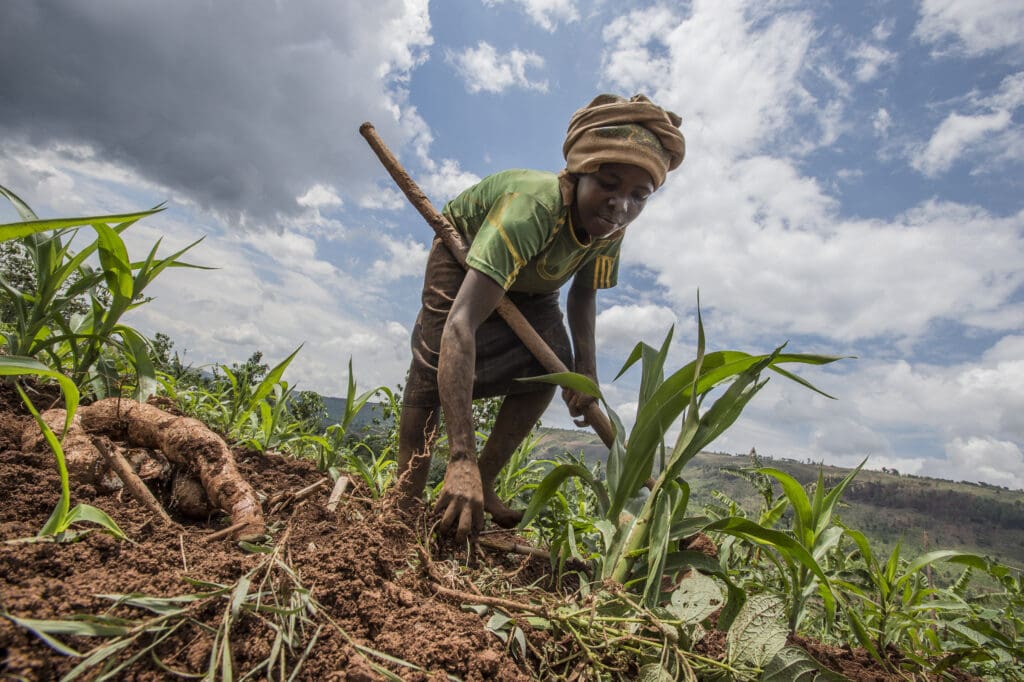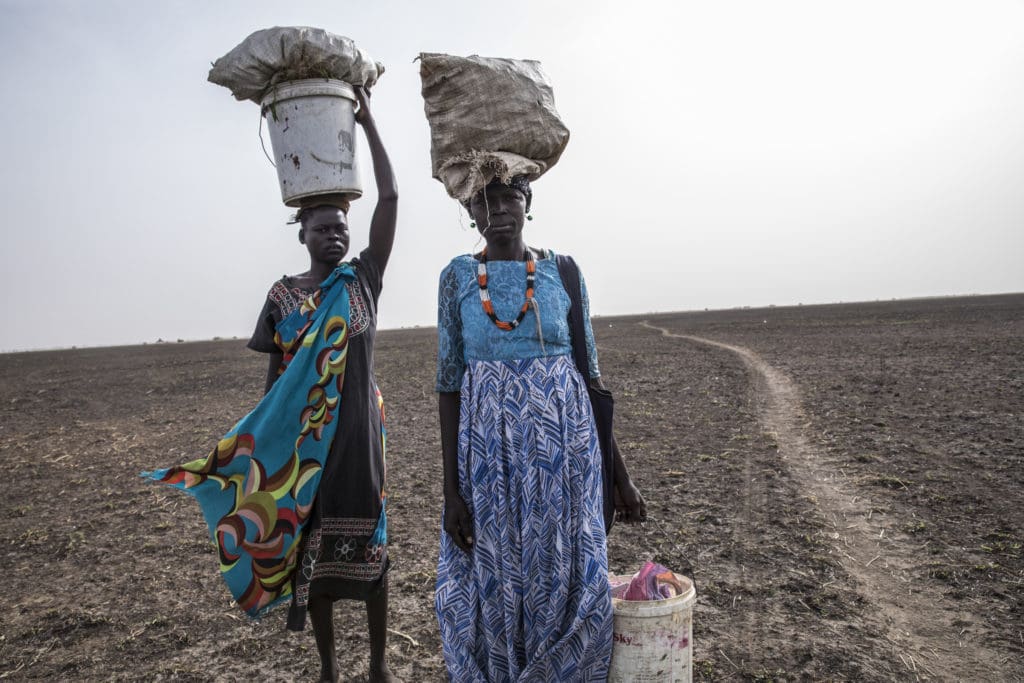Forecasting Food: Reducing the Impact of Climate Change on Farmers

Across the world, nearly half of the world’s hungry are farmers. They are small-scale farmers, who depend on their harvests to eat, and hopefully have a little left over to sell. As the climate changes, its affects are impacting these farmers the most. “Everything has changed,” said one farmer in the Democratic Republic of Congo. “We used to understand the weather, but no more.”
In response to this climate crisis, experts across the world are dedicating their research to discovering ways to reduce the impact. One of these experts is Bruce Campbell, a program director at CGIAR Research Program on Climate Change, Agriculture and Food Security (CCAFS), an organization that seeks to address the increasing challenge of global warming and declining food security on agricultural practices, policies and measures through strategic, broad-based global partnerships. We sat down with Bruce to ask him a few questions about his research, and how he hopes it will help small-scale farmers across the globe.
WFP USA: What led you to a career in researching climate change, agriculture and food insecurity?
BC: I am almost afraid to say, as it was almost a set of random incidents! I had been working with the International Forestry Research Center for about a decade. This included some attention to climate change, forests and forest-based livelihoods. But I found that having to always keep forests as the central focus was limiting, as my work with rural households in Africa showed me how diverse households were in their livelihood strategies.

Bruce Campbell
To really make a difference one needed to have crops, livestock, forests and off-farm activities covered in one’s research endeavors. Two jobs came up, one on climate change and one on water. With my previous work in African drylands, I decided to go for the water one and did not get it! I had seen that the climate change world of research and development was highly political and thought I did not want to throw myself into that arena. Then I got a call from a headhunter and was asked to apply for the climate job, and, as they say, the rest is history.
WFP USA: What are some of the research projects you’ve felt most passionate about during your time with CGIAR?
BC: For me the research projects that have led to significant outcomes for people and society are the ones I have felt most passionate about. An example from Senegal is very exciting. It involved working with men and women farmers on how they made decisions related to their own predictions for seasonal rainfall and thus, when to conduct farming operations during the season (e.g. in relation to what they thought the weather would bring).

A farmer with his livestock in Senegal.
We started to bring the farmers seasonal and in-season forecasts, provided by the weather service, to further explore in what format they liked to receive the information and what exactly they wanted to know. At the same time, we were working with the national weather service to determine how the accuracy of forecasting can be improved. Once we were more certain of what farmers wanted, we worked with broadcasters in community radio stations. We were soon getting forecasts to about 7 million people through various channels, including more traditional extension approaches.
Supplementary research shows how good forecasts can be in helping farmers make better decisions in their operations. We believe climate-informed advisories are a key part of adaptation to climate change. And this research involved people from a range of different type of national organizations, farmers, local civil society organizations and a top climate institute. It’s the kind of partnership needed to make a difference. And the research is very diverse, covering climate science, willingness-to-pay surveys, gender differentiated needs and extension agents, who are links between state institutions like ministries and universities that provide direct support to farmers.
WFP USA: You recently authored an article in Environment Research Letters entitled “How much does climate change add to the challenge of feeding the planet this century?” Can you briefly describe what you found in this analysis?
BC: The example from Senegal is an example of our work on the ground. We also do work at the global level, trying to inform global decision makers. This paper is an example of the latter. This is a meta-analysis of the multiple previous studies on impacts of climate change, so we had about 27,000 data points!
From those studies we found that average impacts of climate change on crop yields up to the 2050s will be generally small (but negative) for rice and wheat, and modest for maize, provided farmers adopt practices and technologies such as improved varieties, planting at optimal times, and improved water and fertilizer management. Incidentally, planting at optimal times requires good climate-informed advisories, thus the work in Senegal and elsewhere on this.

A farmer in Malawi with her maize harvest.
Massive investment, policy, and institutional support will be needed to facilitate adoption and scaling-out of such practices, and to address climatic variability. I should quickly add that the previous studies part of this meta-analysis were largely based on average trends, with less attention to variability and extreme climate events. More and more, evidence is emerging that the weather extremes are increasing in frequency and severity.
WFP USA: What will the impact of climate change on agriculture be in developing countries vs. places like the U.S.? What does this mean for food security in these places?
BC: Unfortunately, it is low-income and medium-income countries in the tropics where the greatest impacts will be felt. Africa has contributed almost nothing to global warming and yet it will experience much greater impacts of climate change than those countries that have been largely responsible for global warming.
Several countries in Africa will be severely challenged. I have worked in Southern Zimbabwe a lot. It is tough to farm there, as conditions change dramatically from season to season. In a warmer world, with even more variability, I cannot imagine how the next generation can farm under those kinds of conditions.

Christine Mabika, a small-scale farmer in Zimbabwe.
We can expect greater variability in production from year to year. We can expect bigger challenges for feeding populations in poor production years. We can expect years of extreme hunger. But I quickly add, “unless.” We need more attention to water development, more attention to climate-resilient practices, more attention to building the resilience of landscapes, more attention to climate-informed advisories. There are many things we need to get in place to avoid crisis situations in multiple places.
WFP USA: Does climate change impact men and women differently in developing countries or among subsistence farming communities?
BC: Yes, it does, as in many farming communities, women and men are responsible for different crops. Thus, the actual impact will depend on what men are responsible for and what women are responsible for. But, perhaps more important, is the fact that men and women have differential access to resources and information. For example, we have a number of surveys which show that men are the focus of extension agents or have greater access to information.

Two female small-scale farmers carry crops across a dry field in South Sudan.
WFP USA: How can aid agencies like WFP work with research organizations like CCAFS to lessen climate impact? Where can these two communities best work together and benefit from each other?
BC: My philosophy is that research organizations like mine cannot be ivory towers, they need to have deep and trustful relationships with the agencies that can make a difference in the world, and WFP is one of those agencies. As researchers we need to understand what kind of information and research WFP needs to advance its agenda of action on the ground, both in building resilience and in delivering emergency relief to climate-impacted areas.
This could involve helping WFP find new ways to access the information it needs to prioritize its operations, finding better ways of forecasting stocks of grain (e.g. involving national food security agencies), improving seasonal forecasting, and finding better ways to insure farmers and the most appropriate approaches to enhancing the resiliency of lives and landscapes.
WFP USA: Agriculture hasn’t always been on the international climate change agenda. Has that changed in recent years and what do you attribute that change to?
BC: Yes, I remember discussing agriculture in the climate negotiations from 2009 and every year thereafter, and it was only in 2015 that agriculture rose to the top of the climate change agenda. That required a concerted effort over a number of years by many agencies, including CCAFS. Working papers, meetings, capacity development efforts and bilateral discussions with key individuals involved. Then it was a number of years again when there was little progress, requiring more such effort. But now agriculture is a very visible topic in the climate negotiations.

WFP USA: Finally, What’s the goal of your research? How would you like to see it used?
BC: It is all about preparing the world – particularly low-income countries – for the impact of climate change, and also reducing emissions from agriculture. It is about bringing research to bear on these issues – research that can make a difference. We see the challenges are immense and are now embarking on a “transformation initiative” – we see that our food systems have to transform if we are to meet the tremendous challenges that climate change presents.




